Bikemate 22967 Handleiding
Bikemate
Fietscomputer
22967
Bekijk gratis de handleiding van Bikemate 22967 (2 pagina’s), behorend tot de categorie Fietscomputer. Deze gids werd als nuttig beoordeeld door 69 mensen en kreeg gemiddeld 4.6 sterren uit 35 reviews. Heb je een vraag over Bikemate 22967 of wil je andere gebruikers van dit product iets vragen? Stel een vraag
Pagina 1/2

Dok./Rev.-Nr. 195787_20180117
A
6
5
4
3
2
1
7
8
9
10
11
12
13
B
6
5
13
C
11
12
13
D
2 mm max.
7
11
8
E
14
10
11
F
11
1
G
5 1
H
User Manual
ID: #07177
m
y
h
a
n
s
e
c
o
n
t
r
o
l
.
c
o
m
C
E
R
T
I
F
I
E
D
User-friendly
Manual
DISTRIBUTED BY:
ALDI INC., BATAVIA, IL 60510
WWW.ALDI.US
USA
MODEL:
22967
service@801service.net
866-558-8096
AFTER SALES SUPPORT
USA
95698
05/2018
WIRELESS BICYCLE
COMPUTER
YEAR
WARRANTY
3
General information
Reading and storing the
user manual
This user manual ac-
companies this wireless
solar bicycle computer.
It contains important
information about
start-up and use.
Before using the bicycle comput-
er, read the user manual carefully.
This particularly applies to the
safety instructions. Failure to fol-
low this user manual may result
in severe injury, or damage to the
bicycle computer. Store the user
manual for further use. If you pass
the bicycle computer on to third
parties, please be absolutely sure
to include this user manual.
Explanation of symbols
The following symbols and signal
words are used in this user man-
ual, on the bicycle computer or on
the packaging.
WARNING!
This signal symbol/word desig-
nates a hazard with moderate
degree of risk which may lead
to death or severe injury if not
avoided.
NOTICE!
This signal word warns against
potential damages to property.
This symbol pro-
vides you with use-
ful supplementary
information about
assembly or use.
FCC Conformity
This bicycle computer complies
with part 15 of the FCC rules. Op-
eration is subject to the following
two conditions: (1) This device
may not cause harmful interfer-
ence, and (2) this device must
accept any interference received,
including interference that may
cause undesired operation.
Please take attention that chang-
es or modification not expressly
approved by the party responsi-
ble for compliance could void the
user’s authority to operate the
equipment.
The operating frequency is be-
tween 120kHz and 125kHz.
Safety
Proper use
The bicycle computer is designed
exclusively for displaying and col-
lecting information when using
a bicycle. It is only intended for
private use and not suitable for
commercial purposes.
Only use the bicycle computer
as described in this user manu-
al. Using it in any other way is
deemed improper and may result
in damage to property or even
personal injury. The bicycle com-
puter is not a children’s toy.
The manufacturer or vendor
accepts no liability for damage
caused by improper or incorrect
use.
Package contents/
device parts
1Bicycle computer (example)
2Display
3Right button
4Left button
5Bicycle computer mounting
bracket
6Rubber pad (bicycle
computer)
7 Magnet
8 Magnet holder
9CR2016 battery
10 CR2032 battery
11 Sensor
12 Rubber pad (sensor)
13 Cable ties, 6×
14 Battery compartment cover
Safety instructions
WARNING!
Danger for children and per-
sons with impaired physical,
sensory or mental capaci-
ties (e.g. partially disabled
persons, older persons with
reduced physical and mental
capacities) or lack of experi-
ence and knowledge (e.g.
older children).
− This bicycle computer may
be used by children ages
eight and over as well as
persons with impaired
physical, sensory or
mental capacities or those
lacking experience and
knowledge, if they are
supervised or have been
instructed in how to safely
use the bicycle computer
and understand the risks
associated with operating
it. Children must not play
with the bicycle computer.
Cleaning and user mainte-
nance must not be per-
formed by unsupervised
children.
− Keep children under eight
years of age away from the
bicycle computer.
WARNING!
Danger of suffocation!
The bicycle computer contains
small parts. Children could
swallow them when playing
and choke.
− Keep small parts away from
children.
WARNING!
Battery hazards!
The bicycle computer and the
sensor each contain a battery.
Improper handling of the bat-
teries may result in explosion or
serious internal injury.
− Store both new and used
batteries so that they are
not accessible to children.
− If you suspect that a battery
has been swallowed or
otherwise incorporated,
promptly consult a physi-
cian.
− Only replace the batteries
with the same battery type.
− Do not touch leaky bat-
teries. If you do come into
contact with battery acid,
wash the affected area
thoroughly and rinse it with
plenty of water. If leaked
battery acid comes into
contact with your eyes or
causes skin irritation, also
seek medical attention.
− If it is no longer possible to
securely close the battery
compartment, dispose of
the bicycle computer as
described in the chapter
“Disposal”.
− Do not charge or reactivate
batteries, do not disassem-
ble them, do not throw
them in fire and do not
short circuit them.
− Dispose of batteries at your
local collection point.
NOTICE!
Risk of damage!
− Improper handling of the
bicycle computer may
result in damage to the
bicycle computer.
− You can use the bicycle
computer at ambient
temperatures between
14°F and 122°F (-10°C and
+50°C).
− Do not expose the bicycle
computer to permanent
moisture.
− Avoid dust, heat and con-
tinuous exposure to direct
sunlight.
− Never try to repair the bicy-
cle computer yourself. For
technical problems, contact
the service address indicat-
ed on the warranty card.
Information about
solar cells
This bicycle computer is equipped
with solar cells that transform
light energy into electricity. This
extends the useful life of the
battery. However, batteries are
needed for the sensor and also to
supply energy when it is dark.
Checking the bicycle
computer
1. Take the bicycle computer
1
out of the packaging.
2. Remove the protective foil
from the bicycle computer.
3. Check to make sure the bicy-
cle computer is complete and
undamaged (see Fig.A).
If it is not, do not use the
bicycle computer. Contact the
service address indicated on
the warranty card.
Assembly
Assembling the bicycle
computer mounting
bracket and bicycle com-
puter
1. Attach the bicycle computer
mounting bracket 5 and the
rubber pad 6 to the handle-
bar with two cable ties 13 .
There are two options:
• If you attach the bicycle com-
puter mounting bracket to the
handlebar tube, thread the
cable ties vertically from the
front (see Fig.B, bottom).
• If you attach the bicycle com-
puter mounting bracket to the
stem of the handlebar, thread
the cable ties horizontally
from the side
(see Fig.B, middle).
2. Slide the bicycle computer
1
from the front into the bicycle
computer mounting bracket
until it clicks into place
(see Fig.G).
3. Turn the bicycle computer so
that it is at a 90° angle to the
sensor 11 .
Assembling the sensor
and magnet
1. Attach the sensor 11 and the
rubber pad 12 to the middle
of the fork with two cable
ties 13 (see Fig.C).
Make sure that the
bicycle computer
and the sensor are
at a 90° angle to one
another. The dis-
tance between the bicycle com-
puter and the sensor should be
no more than max. 23" (60cm)
(see Fig.F).
2. Unscrew the magnet
7 and
the magnet holder
8.
3. Attach the magnet to a spoke
on the front wheel and screw
the magnet holder onto the
magnet (see Fig.D).
Ensure that the
magnet passes the
sensor at a distance
of approx. 0.08"
(2mm) at the arrow
mark on the sensor (see Fig.D).
Start-up
Switching on the bicycle
computer
Before starting the bicycle com-
puter, a few settings must be
made.
− To switch on the bicycle com-
puter 1, press one of the
two buttons 3 or 4 on the
bicycle computer.
Selecting kilometers/
miles
The selection for the units of
measure kilometers (KM/H) or
miles (MPH) will appear as the
first indicator.
− Press the right button
3 to
switch between the units of
measure.
− Confirm your selection by
pressing the left button
4.
Setting tire circumference
Necessary after new
battery insertion or
reboot.
How to determine
the tire circumference:
1. Turn the front tire valve to the
lowest position and mark the
position of the valve on the
floor.
2. Move the bicycle forward for
one front wheel revolution
until the valve has returned to
the lowest position.
3. Measure the distance covered
in inches.
This is the tire circumference.
The display shows the default
setting for a “2155” tire circumfer-
ence (=mm). The thousands digit
2 flashes. The thousands digit can
be set to either 1 or 2. The remain-
ing numbers can assume a value
between 0–9.
− Press the right button
3
until the correct number
appears.
The thousands digit is set.
− Confirm your entry by pressing
the left button
4.
− Repeat the steps for the hun-
dreds, tens and ones.
Setting the total distance
The display shows the default
setting for a total distance of
“00000”.
− Press the right button
3 to
increase the number by one.
− Confirm your entry by pressing
the left button
4.
The ones, tens, hundreds, thou-
sands and ten thousands can as-
sume a value between 0–9.
Setting the inspection
interval
The display will show the default
setting of “000.00” for the total
distance. This corresponds to the
remaining distance until the next
bike inspection.
− Press the right button
3
to increase the ones, tens or
hundreds by one.
− Confirm your entry by pressing
the left button
4.
Setting weight
The display will show a default
setting of “065” for weight.
− Press the right button
3 to
increase the hundreds, tens or
ones by one.
− Confirm your entry by pressing
the left button
4.
Setting the CO₂ savings
This function calculates the CO₂
savings. This determines how
much CO₂ would have been
produced if the journey had
been made by car rather than
by bicycle. Look in the technical
documents of your car to find its
emissions value in g/km. Or use
the default setting of 160 g/km.
The default value of “160” appears.
− Press the right button
3 to
increase the hundreds, tens or
ones by one.
− Confirm your entry by pressing
the left button
4.
Setting the time
The hour display flashes.
− Press the right button
3
until the correct number
appears.
The hour display is set.
− Confirm your entry by pressing
the left button
4.
zur Freigabe/Korrektur_V8

The minute display flashes.
− Press the right button
3
until the correct number
appears.
The minute display is set.
− Confirm your entry by pressing
the left button
4.
Setting the backlight
You can choose between LT-1 and
LT-2 mode.
LT1-1 mode:
The backlight will be activated for
approx. 3 seconds as soon as any
button is pressed in any mode
within the set time frame.
LT2 MODE:
The backlight will turn on or off if
the right button 3 is held down
for approx. 3 seconds.
Setting:
The LT-1 mode indicator flashes on
the display.
− Press the right button
3 to
switch between LT-1 mode and
LT-2 mode.
− Confirm your entry by pressing
the left button
4.
After you have confirmed LT-2
mode, the main function indicator
will appear.
After you have confirmed LT-1
mode, you will set the time frame
(start and stop time) for activating
the backlight.
The hour display flashes.
− Press the right button
3
until the correct number
appears.
The hour display is set.
− Confirm your entry by pressing
the left button
4.
The minute display flashes.
− Press the right button
3
until the correct number
appears.
The minute display is set.
− Confirm your entry by pressing
the left button
4.
Testing the bicycle
computer
− Turn the front wheel of the
bicycle.
The speed appears in the
display 2 if the bicycle
computer 1, sensor 11 and
magnet 7 have been correctly
mounted. If the speed does
not appear in the display, check
and repeat the assembly proce-
dure if necessary (see chapter
“Assembly”).
Restarting bicycle
computer
− To reset stored data, press the
left button 4 and right but-
ton 3 together for approx.
5seconds.
After restarting/resetting the
device, all settings must be reen-
tered (see section “Setting tire
circumference” to section “Setting
the time”).
Automatic power-off of
the bicycle computer
When at a standstill, the bicycle
computer automatically powers
off after approx. 5 minutes with-
out loss of data.
− To switch the
bicycle computer 1
back on again, press the
right button 3 or the
left button 4.
Automatic stop-start
function
All functions have an automatic
start-stop function (exception:
stopwatch and time).
− To activate this stop-start func-
tion, first switch on the bicycle
computer 1 by pressing the
left button 4 or the right
button 3.
Measuring starts when the mag-
net 7 passes the sensor 11 for
the first time. If the bicycle is still,
it waits approx. 3seconds for a
new signal. If there is no further
signal, the measuring process
stops automatically.
Modes/functions
The speed and time indicator
appears after the bicycle computer
has started up (see Fig.H).
Speed
• This is constantly calculated
and updated; it is always
shown in the middle of the
display 2. Max. measuring
range: up to 199.9 km/h / mph.
CLK (time) / SCAN
• The time is shown in 24-hour
mode. It is set as described in
the section “Setting the time”.
− Press the left button to access
the SCAN function.
The word SCAN appears in the
bottom left of the display. In this
mode, the functions DST, TM, and
AV SPD are automatically dis-
played at a 2 second interval.
− Press the left button to switch
back to time.
− Press the right button to
switch to the stopwatch.
STW (Stopwatch)
− Press the left button to start/
stop the stopwatch. Maximum
measuring range: 9:59:59.
− Press the right button to
switch to trip distance.
DST (distance)
The counter for trip distance will
automatically start when you
start cycling.
Maximum measuring range:
999.99.
− Press the left button to switch
between the trip distance and
total distance.
− Press the right button to
switch to the cycling time
indicator.
TOT DST (total distance)
The total kilometers (miles) cycled
are saved.
Maximum measuring range:
99999.
− Press the right button to
switch to the cycling time
indicator.
TM (cycling time)
The total cycling time since the
last reboot is shown. Maximum
measuring range: 9:59:59.
− Press the right button to
switch to the average speed.
AV SPD (average speed)
Maximum measuring range: 199.9
km/h or mp/h.
− Press the left button to switch
between the average and
maximum speed.
− Press the right button to
switch to calorie counter.
MX SPD (maximum speed)
The maximum speed reached is
stored.
Maximum measuring range: 199.9
km/h or mp/h.
− Press the right button to
switch to calorie counter.
CAL (calorie counter)
The average calories burned
(kcal) are shown.
Maximum measuring range:
999.9.
− Press the left button to switch
between the calorie counter,
total calories burned and the
fat burning meter.
− Press the right button to
switch to the temperature.
TOTCAL (total calories burned)
The total calories burned (kcal)
since the last reboot is shown.
Maximum measuring range:
99999.
− Press the right button to
switch to the temperature.
FAT (fat burning meter)
The average amount of fat
burned is shown in grams.
Maximum measuring range:
999.9.
− Press the right button to
switch to the temperature.
TEP (temperature)
The temperature is measured and
updated approx. every 2 minutes.
− Press the left button to switch
between the current, maxi-
mum and minimum tempera-
ture measured.
− Hold the left button for the
current temperature indicator
for approx. 5 seconds to switch
to °F (Fahrenheit).
− Press the right button to
switch to the time.
Speed comparison
Cycling faster or slower than
the average speed up to this
point will be shown with or
on the top left next to the speed
indicator.
Resetting data
(AV SPD, MX SPD, TOTCAL, STW, DST,
TOT DST, TM)
− Press the right/left button
until the corresponding func-
tion is shown.
− Hold the left button down for
approx. 3 seconds to reset the
value.
Changing the battery
1. Open the battery com-
partment of the bicycle
computer 1 or sensor 11 by
turning the battery compart-
ment cover 14 counterclock-
wise with a coin (see Fig.E).
2. Remove the depleted
battery 9 or 10 using a
pointed object.
3. Insert a new battery so that
the positive pole (+) is facing
upward.
4. Replace the battery compart-
ment cover.
5. Close the battery compart-
ment by turning the battery
compartment cover clockwise
with a coin (see Fig.E).
6. Start the bicycle computer
and enter the settings again
(see section “Selecting kilo-
meters/miles” to section “Set-
ting the backlight”).
Cleaning and
maintenance
NOTICE!
Risk of short circuit!
Liquid that has penetrated the
housing may cause a short-cir-
cuit.
− Never immerse the bicycle
computer in liquids.
− Make sure that no liquid
penetrates the housing.
NOTICE!
Risk of damage!
Improper cleaning can damage
the bicycle computer.
− Do not use any aggressive
cleaners, brushes with
metal or nylon bristles as
well as sharp or metallic
cleaning utensils such as
knives, hard scrapers or the
like. They could damage
the surfaces.
Watertightness
Your bicycle computer is pro-
tected against splashing water,
please do not submerge in water.
− Only clean with a damp
cleaning cloth and wipe dry
afterwards.
Storage
All parts must be completely dry
before storage.
− Always store the bicycle com-
puter 1 in a dry area.
− Protect the bicycle computer
from direct sunlight.
− Store the bicycle computer
so that it is not accessible to
children, securely locked away
and at a storage temperature
between 14°F and 122°F
(-10°C and 50°C) (room tem-
perature).
Troubleshooting
No speed display:
• Check the alignment of the
sensor 11 and magnet 7.
• Check the distance between
the magnet and sensor (max.
0.08" (2mm)) as well as the
distance and angle between
the bicycle computer
1 and
sensor (90°/max. 23" (60cm)).
• Check the battery 9 and 10
of the bicycle computer and
sensor.
• Replace the battery.
Incorrect speed measurement:
• Check the setting of the tire
circumference.
• Check the kilometers/miles
setting.
• Check the alignment of the
sensor and magnet.
Black display:
• Check whether the display
2
has become too hot. Allow it to
cool down.
Display shows irregular digits:
• Remove the battery and insert
it again while making sure
that the polarity is correct.
Weak or no display:
• Check that the battery is prop-
erly inserted.
• Replace the battery.
Technical data
Model: 22967
Operating voltage: 3 V
Sensor battery: CR2032
Computer battery: CR2016
Protection class: IP44
Weight: approx.
0.13lb (57g)
Dimensions
(W × D × H):
1.5 × 2.4 ×
0.6" (3.9 ×
6.2 × 1.5cm)
Article number: 95698
Disposal
Disposing of the
packaging
− Sort the packaging before you
dispose of it. Dispose of paper-
board and cardboard with the
recycled paper service and
wrappings with the appropri-
ate collection service.
Disposing of the bicycle
computer
− Should the bicycle computer
no longer be capable of being
used at some point in time,
dispose of it in accordance
with the regulations in force
in your city or state.
− Please ensure your recycling
information applies to local
regulations and the EPA rec-
ommendations
(www.epa.gov).
Batteries and rechargeable
batteries must not be dis-
posed of with household
waste!
As the end user you are required
by law to bring all batteries
and rechargeable batteries,
regardless whether they contain
harmful substances* or not, to a
collection point run by the com-
munal authority or borough or
to a retailer, so that they can be
disposed of in an environmen-
tally friendly manner.
The battery must be removed
from the bicycle computer be-
fore disposal.
*labelled with: Cd = cadmium,
Hg = mercury, Pb = lead
zur Freigabe/Korrektur_V8
Product specificaties
| Merk: | Bikemate |
| Categorie: | Fietscomputer |
| Model: | 22967 |
Heb je hulp nodig?
Als je hulp nodig hebt met Bikemate 22967 stel dan hieronder een vraag en andere gebruikers zullen je antwoorden
Handleiding Fietscomputer Bikemate

9 Juni 2023

9 Juni 2023

9 Juni 2023

9 Juni 2023

9 Juni 2023

9 Juni 2023

29 Mei 2023
Handleiding Fietscomputer
- SmartHalo
- Ciclo
- Polar
- Trelock
- Xplova
- Van Rysel
- Gazelle
- Halfords
- Filmer
- Btwin
- Union
- QT Cycle Tech
- Kogan
- Wahoo
- Ananda
Nieuwste handleidingen voor Fietscomputer
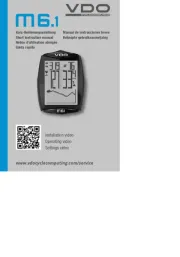
29 Juli 2025
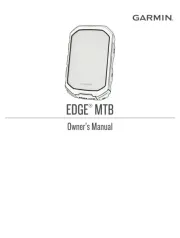
28 Juli 2025
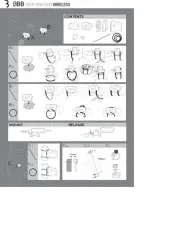
6 Juli 2025
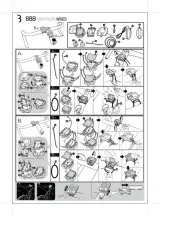
5 Juli 2025
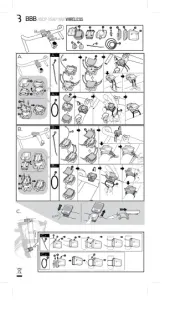
5 Juli 2025
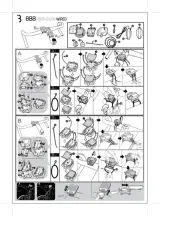
5 Juli 2025
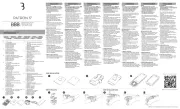
2 Juli 2025
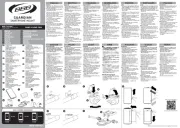
1 Juli 2025
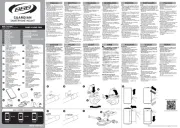
1 Juli 2025
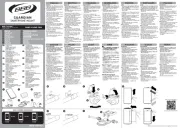
17 Juni 2025